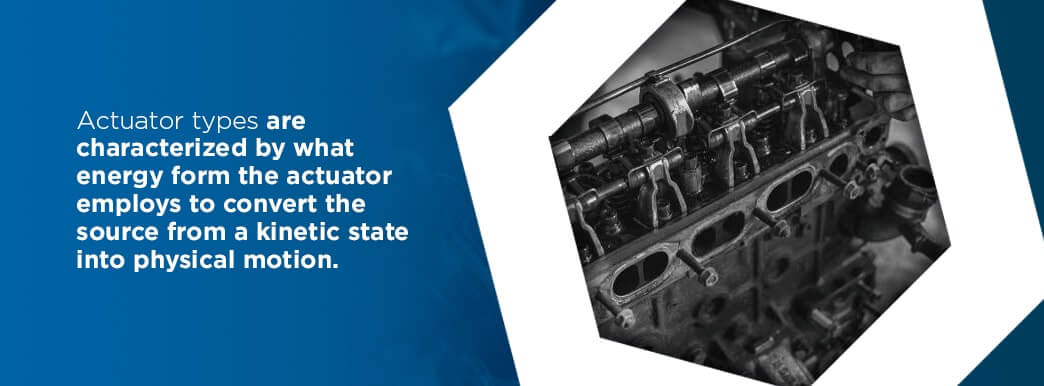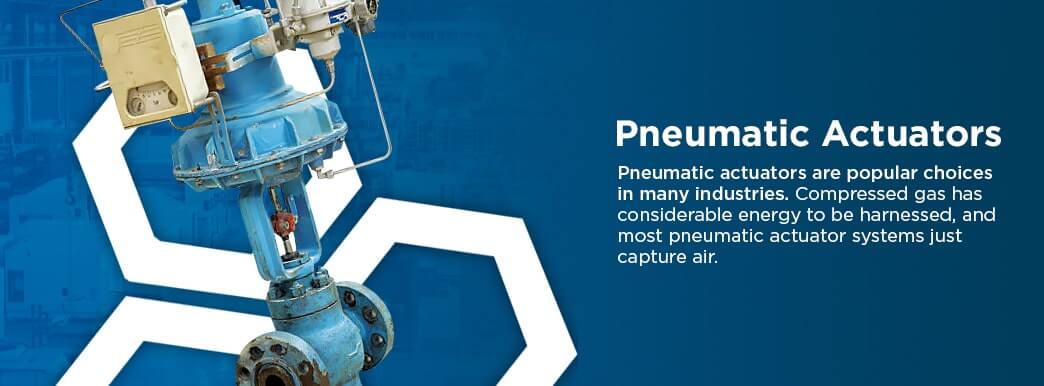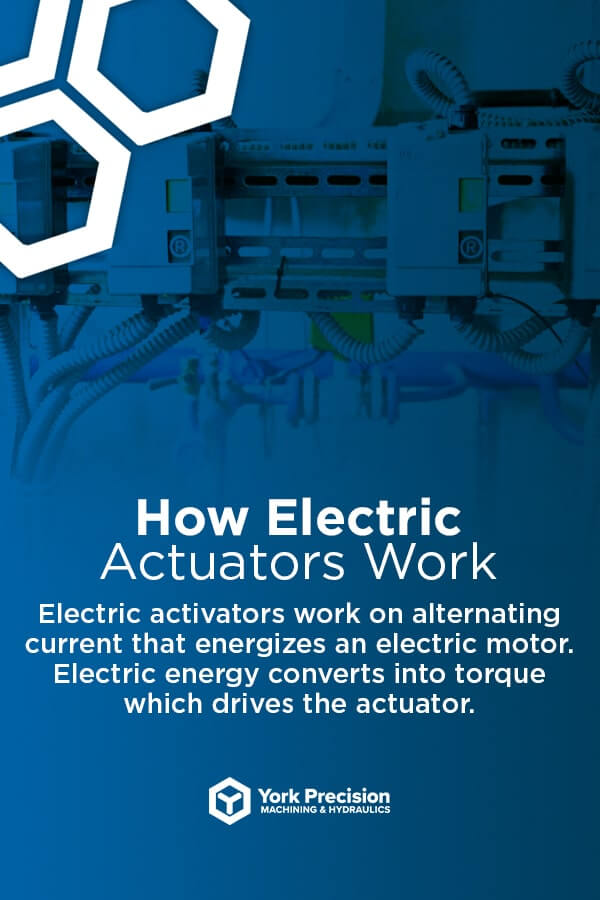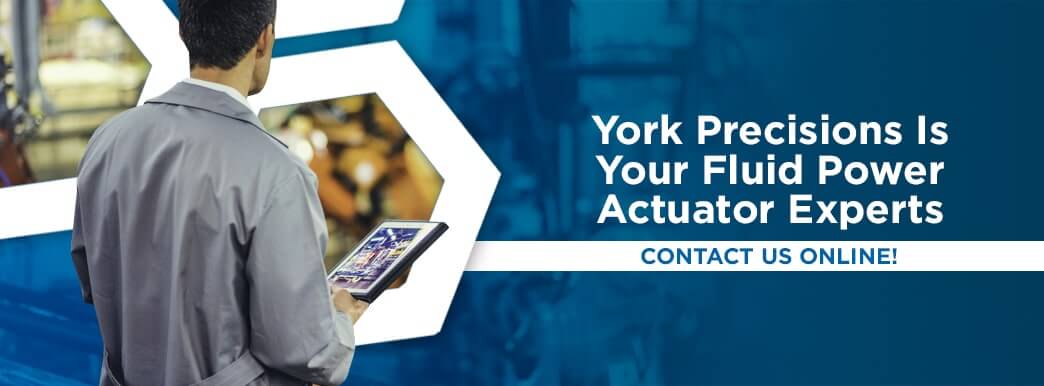Hydraulic vs. Pneumatic vs. Electric Actuators
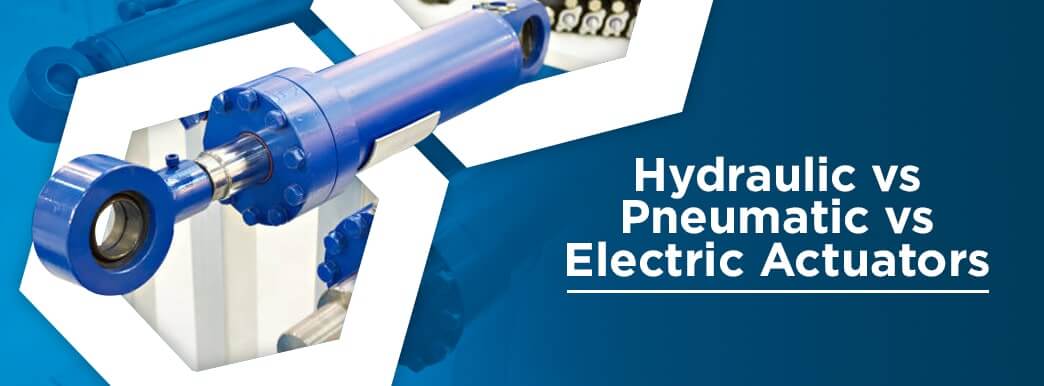
Author: Kyle Sendatch, Mechanical Engineer
Table of Contents
Within industry groups as varied as manufacturing, transportation and national defense, you’re sure to find actuators filling an important role. Actuators are critical in controlling and facilitating practically every mechanized process.
As such, actuators play a prominent part in the world’s economy. Market evaluation statistics suggest that the actuator and valve sector will generate over $127 billion by 2025. The actuator business is currently expanding at a compound annual growth rate of 5.23%. This economic activity involves the three main actuator types — hydraulic, pneumatic and electric.
What Are Actuators Used For?
Actuators are mechanical devices that convert energy into motion. This involves a control command that signals a change in a physical system which then generates force to accomplish a task. The commanding signal can be human-operated or automatically controlled while the energy source varies.
The primary function of actuators is to control machines and allow parts to move. This motion can be any one of hundreds of operations such as lifting, clamping, blocking and ejecting. Typically, actuators are key parts in industrial and manufacturing operations where they activate valves, pumps, motors and switches.
Actuators usually control and direct mechanized motion. Movements can be linear, rotary or oscillatory. In other terms, that motion can be in one direction, circular or back and forth in regular intervals. No matter what end motion a mechanized system desires, it would impossible to achieve without actuator assistance.
Practically every industry uses actuators in some manner. Operations in oil and gas processing, aviation and aerospace, military and defense, marine, mining, forestry and road building require actuators. Actuators are also used in manufacturing equipment like presses, cranes, drill rigs, coal crushers, man lifts, missile launchers and material handling equipment. Name an industry or service, and you’ll see them using actuators somewhere down the line.
What Are the Three Types of Actuators?
As noted above, there are three different actuator types — hydraulic, pneumatic and electric. We will get into more detail about each style and its advantages and disadvantages below.
Actuators classify first by the type of motion they produce. While rotary actuators generate rotation, linear actuators move in a straight path. Either type can also take the designation of oscillating if the movement cycles regularly.
Actuator types are next characterized by what energy form the actuator employs to convert the source from a potential state into physical motion. Potential energy is stored energy with the ability to do work. Kinetic energy is the energy of motion. The most common energy sources are compressed fluids, compressed gas and electricity.
Hydraulic actuators operate with compressed fluid and control movement by managing the amount of fluid inside. Adding fluid increases pressure while reducing it lessens the force. These actuators are ideal for applications that need more significant power, but you can also commonly find them in products like exercise equipment.
The primary advantage of pneumatic systems is that they run on compressed air or gas instead of fluid. As a result, they are involatile and require no electricity to perform. Pneumatic actuators are versatile and affordable, making them popular for braking systems and pressure sensors.
The function of an electric actuator is to generate mechanical power from electricity input. Since the power source is consistent and continuous, these actuator types offer easy maintenance and are ideal for high-precision work. Electric actuators are common in manufacturing, robotics and electric vehicles.
You’ll find a lot of debate over actuators, but which actuator type is the best depends on your application. In some situations, electric and pneumatic actuators are the best choice. However, in many applications today, hydraulic actuators give you superior performance. Read on to discover more about the benefits, drawbacks and popular applications of each actuator type.
Hydraulic Actuators
Hydraulic actuators remain the most popular energy conversion systems. They are common in heavy-duty work like large construction machinery, marine propulsion and cargo handling, military weapons and transportation systems and overall jobs where brute power rules.
1. How Hydraulic Actuators Work
Hydraulic actuators work on fluid compression and convert that pressure into motion under controlled circumstances. In almost all hydraulic systems, that fluid is some form of oil. Because oil is very difficult to compress, it easily transfers large amounts of energy by volume.
Pressurized hydraulic oil is used in cylinders, which are tubes containing rams. Hydraulic actuators use pressurized fluid energy to drive the ram and operate the device or machine that the actuator serves. Pressures used in a hydraulic actuator ranges between 1,000 to 5,000 pounds per square inch (psi). Large actuators can exceed 10,000 psi for specialized applications.
Hydraulic actuators provide the greatest overall force and power density you can get with any actuator design. They’re relatively simple mechanisms with two main parts — a control device like a throttle and an actuation component such as a piston, slide or valve. Here are some pros and cons of hydraulic actuators.
2. Pros
If it’s heavy-duty work you require, then there are far more pros to investing in hydraulic actuators than relying on air or electric power. Your return on investment is strength, efficiency and convenience among these other points:
- Force: Hydraulic actuator motors have a high horsepower-to-weight ratio. They are extremely forceful and produce a tremendous amount of power for their size. This makes them economical as well as highly efficient.
- Safety: Hydraulic power is easy to contain and control. Hydraulic systems are extremely dependable and their design has been long-proven to be safe and secure. Many hydraulic controls are automated, but it’s simple to build manual overrides into hydraulics that let an operator directly control the actuator.
- Mobility: Here’s where hydraulic actuators also excel. They are self-contained and portable without needing a cumbersome and complicated support system. Hydraulics are ideally suited for trucks and heavy equipment applications.
3. Cons
Although hydraulically controlled systems have considerable advantages over their rivals, they do have a few drawbacks. There are some applications where hydraulic power may not be compatible, in settings where there is any chance of contaminating product. Here are a few more cons you should know about if you’re considering hydraulic actuators.
- Initial investment: Because most hydraulic actuators are large and powerful, they can be relatively expensive as initial investments. However, like other investments, you have to consider your returns. An initial cash layout pays back over time, especially if you require the power and performance that a hydraulic actuator delivers.
- Maintenance: Hydraulic equipment requires maintenance, and that can cost more time and money. But, you’ll find that both pneumatic and electric actuators also need their share of maintaining, as does any industrial product.
- Leakage: The biggest concern investors have about acquiring a hydraulic actuator is leakage. Hydraulic oil can leak and can be challenging to clean. It's also a serious contaminant. With proper maintenance, though, your risk of hydraulic leakage is significantly reduced.
Pneumatic Actuators
Pneumatic actuators are popular choices in many industries. Compressed gas has considerable energy to be harnessed, and most pneumatic actuator systems just capture air. Fortunately, there’s a plentiful air supply in almost all applications where you’d consider using an actuator.
1. How Pneumatic Actuators Work
Compressing air is a technology that’s been around a long time. It’s simply intaking air at atmospheric pressure and then mechanically compressing it to a higher pressure. Most actuator systems that use pneumatic power have compression rates of about 80 to 100 psi.
This limited pressure rate makes pneumatic systems stable and safe. However, the low pressure rating makes them less powerful than higher capacity hydraulic actuators. Selecting a pneumatic system over a hydraulic or electric actuator is also a matter of application.
Pneumatic actuator systems have five main parts — a primary motor, a compressor unit, a storage tank, a delivery hose network and the actuator device. In the right situation, such as lighter duty applications, pneumatic systems are good choices. Here are some pros and cons of pneumatic actuators.
2. Pros
Speed is the biggest pro you’ll find with pneumatic actuators. Compressed air allows for high-speed motion and energy released. If you have an application where speed is more important than power, then you may consider a pneumatic actuator. Here are some more pros about pneumatics.
- Fast: Pneumatic actuators are the fastest on the market and that allows for high cycle times. Increased duty cycling allows for greater productivity. That transfers into profitability and a great investment return.
- Economical: On average, pneumatic actuators are less expensive to purchase than hydraulic or electric devices. That equates into less capital upfront and a quicker return coming back. Pneumatic actuators are an economical choice for light and medium-duty applications.
- Simple: Although there are five main components in pneumatic actuator systems, they’re quite basic in design. Simplicity usually means there’s less to go wrong and not as much to fix when it does.
3. Cons
The biggest negative you’ll find about pneumatic actuators is their limited strength or work capacity. However, if this isn’t a concern, don’t overlook the value in pneumatic equipment. Here are three disadvantages to compressed air actuation:
- Limited power: This is only a negative if your application is big and bulky. Pressure means power, and there’s only so much pressure to be made in pneumatics. When comparing pneumatic vs. hydraulic actuators, you're probably better off with a hydraulic system if you’re after high energy.
- Shorter life cycle: Hydraulics have a better reputation for longevity than pneumatics. All things being equal, a hydraulic actuator will outlast one powered by compressed air. If you want long-term service, then this is a con to be aware of.
- Temperature: Compressed air contains water. Temperature is a big factor in determining the amount of air-water content you have at your facility. Pneumatic actuators are susceptible to water effects and have performance problems when the temperature is too high or too low.
Electric Actuators
Electric actuators have come a long way in a short time. At one point, actuators powered by electricity had their share of problems. They were weak, unreliable and only applicable to very light duty. That’s not the case anymore, thanks to advances in technology.
1. How Electric Actuators Work
Electric activators work on alternating current that energizes an electric motor. Electric energy converts into torque which drives the actuator. This is a straightforward principle that’s becoming far more accepted in the actuator industry.
Electric actuators use mechanical components like lead screws and gears to open and close their applications. The difference between pneumatic and electric actuators is that the electric motor is part of the actuator assembly rather than separate. Once applicable to light-duty work, that’s now changing. Here are more pros and cons of electric actuators.
2. Pros
Like any type of actuator, electric actuators can be the right choice when matched with the right job. Here are a few pros that might make investing in electric actuators inviting.
- Fast: Electric actuators are directly driven. As such, they have excellent response times that make them fast performers. For quick and light work, electric actuators are great.
- Precise: Electric actuators are precise devices. Whereas hydraulic and pneumatic actuators have tolerances like slack, backlash and flex inherent in their design, that’s not an issue with electrics. For precision control and performance, electric actuators are a good bet.
- Clean: Electricity is a clean energy source, meaning, there is no potential risk for leakage.
3. Cons
There are some cons to electric actuators, as there are with all mechanical devices. Here are three disadvantages to electric actuators:
- Weak: You can’t get the same amount of strength and power with electrics that you can with hydraulics or pneumatics. Despite increased technology that adds strength to actuator designs, electrics still remain relatively weak.
- Complicated: Electric actuators tend to be complicated designs. Complications lead to a higher risk of breakdown and downtime. This is a con you’ll want to remember when looking at actuation systems for your site.
- Costly: There is a significant cost attached to most electric actuation devices. On a cost-per-strength basis, electrics are considerably higher priced.
What Type of Actuator Is Best for Your Application?
Knowing what actuator is best for your application depends on your working environment. That could be a heavy-duty outdoor environment where hydraulic actuators are popular, a fast-moving indoor environment where pneumatic actuators are common or a clean-room environment where the only realistic option is electric actuators.
The main difference between actuators is the power they can handle. All actuators convert some form of stored energy into motion, but their ability to handle that energy and convert it into physical work varies. These are general applications for the three main actuator types:
- Hydraulic actuators: For heavy-duty work, nothing beats hydraulic power. Compressing a fluid like oil produces much more motion power than compressing a gas like air. Hydraulic power performance is also superior to electrically operated actuators.
- Pneumatic actuators: Compressed air won’t produce the power that hydraulic actuators generate, but they will be stronger than electrically energized actuators. Pneumatic systems tend to work faster than hydraulic and electric actuators.
- Electric actuators: Actuators operated on electric current have their advantages and disadvantages. While generally not producing the strength that hydraulic and pneumatic systems are capable of, they are cleaner and sometimes more cost-effective.
To appreciate what actuator is best for your application, you have to know the parameters of its work environment and what you expect it to do. There are many more considerations than strength that should influence your actuator choice. Some important issues are:
- Tilt and pivot: The degree of movement required
- Lift and lower: Regulating linear travel
- Position, roll and slide: Placement of the actuator
- Open and close: Cycling the actuator
- Tension: Adjusting the device and system
All three actuator types have unique features. In addition to the specific application you have in mind, you should account for other factors before choosing an actuator type. Some considerations are:
- Capacity: The amount of force required
- Voltage: Important for electric actuators or electric components
- Stroke length: Travel measurement needed
- Speed: The amount of operating time or rate required
- Duty cycling: How often the actuator opens and closes
- Orientation: Position or direction of installation
- Special requirements: Weather, fire or leakage concerns
There are more factors involved in selecting the right actuator for your specific application. However, your end choice will come down to the type of power you decide is best for your actuator.
Choosing the Right Actuator
Choosing the right actuator all comes down to your application. You need to have a clear view and understanding of what you want your actuator to accomplish, what environment it’s working in and what you perceive as the best return on your investment.
Overall, if you have a big application that needs reliable power, then hydraulics are the answer.
York Precision: Your Fluid Power Actuator Expert
Choose York Precision Machining and Hydraulics for your actuator applications. At York Precision, we have nearly 50 years of industry experience and expertise that set us apart from other hydraulic fluid power component manufacturers. We’re proud of our "made in America” commitment.
If you're looking for quality actuator or hydraulic cylinders, York Precision Machining & Hydraulics is the company to call. York Precision is your ideal custom cylinder and hydraulic actuator design-to-build
For more information on hydraulic actuators or other custom hydraulic system components, call us at (717) 764-8855 or contact us online.
Awards & Certifications
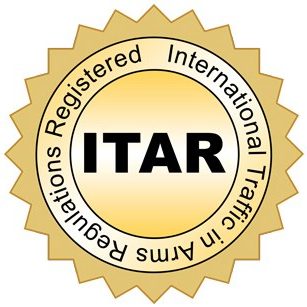
ITAR Registered #M39417
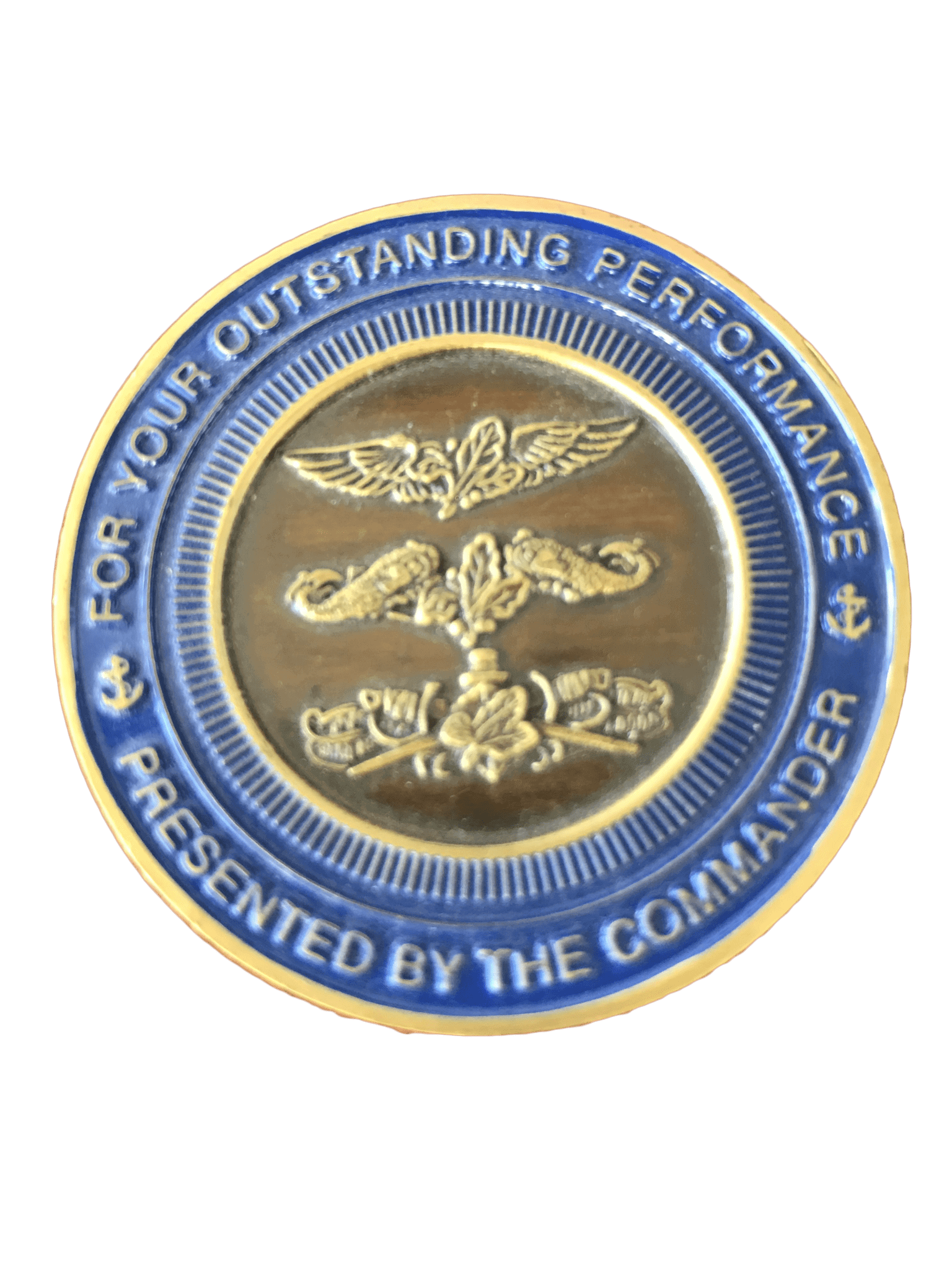
Outstanding Performance

Excellence Presented By Commander
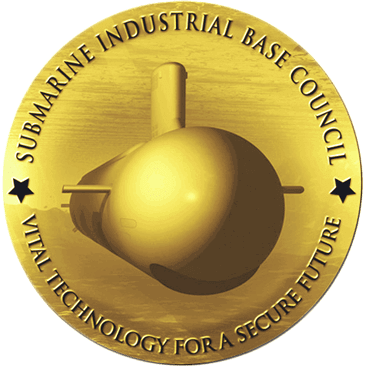
SIBC Member
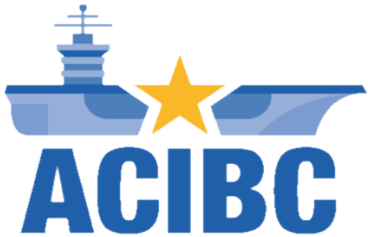
ACIBC Member

NFPA Member


